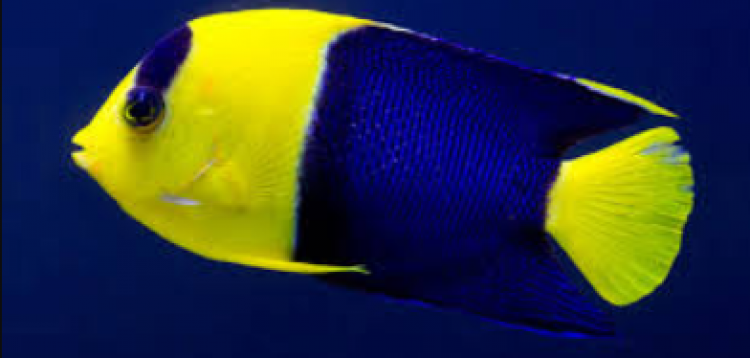- Name:
Gray Black Angelfish
(View AKA's) - Family: Pomacanthidae
- Species: Angel Large
- Scientific Name: Pomacanthus arcuatus


General info about Gray Black Angelfish
The adult Gray Black Angelfish has a gray body with dusky blue polka-dots and the same dusky blue highlights on the caudal, dorsal, and anal fins. The face is a clear, pale silvery-gray. The juvenile is black with yellow stripes. The Gray Black Angelfish is hardy and can reach a length of 20 inches as an adult. It requires a large tank. The tank should contain large amounts of live rock for hiding and grazing. Gray Black Angelfish is prone to nip at stony and soft corals (sessile invertebrates) and clam mantles. The Small Juvenile will contain the Juvenile colorations or may be color shifting to a young adult, while the Medium will be a sub-adult, and the Large will be in Adult coloration
Gray Black Angelfish Diet & Nutrition
Grayback angelfishes are omnivores. This angelfish feed mainly on sponges but is also known to eat tunicates, algae, zoantharians, gorgonians, hydroids, bryozoans, and seagrasses.
Juveniles of this species are part-time cleaners and are found feeding on algae and detritus along with ectoparasites they clean from other fish.
Determining Sex of Gray Black Angelfish
No sexual dimorphism observed but usually males are larger than females.
Breeding & Spawning Gray Black Angelfish
Gray Black angelfishes are monogamous and is observed as both facultative and social. Spawning in the wild usually occurs in the early morning hours as the angelfish pair cruise several feet in the water column with a few chases. The pair comes close together bringing their vents near each other and releases eggs and sperm into the water.
These angels reach sexual maturity at 22-26 cm in total body length.
Common Diseases with Gray Black Angelfish
Susceptible to parasites such as an unidentified crab zoeae found in the gills of a gray black angelfish.
Gray Black Angelfish Origin
Gray black angelfish are common along the reefs in the western Atlantic Ocean. It ranges from New England south to Rio de Janeiro including the West Indies and is ocassionally found in the Gulf of Mexico.
Caution with Gray Black Angelfish
It is best to keep th Gray Black angelfish as the only angelfish in the tank, if they are to be mixed with other angels it should be done so in a large system as possible. They tend to pick at everything that they reach such as corals, anemones, shellfish, algae from live rocks, and other sessile organisms.
Acclimating Gray Black Angelfish
This angel should be freshwater dipped prior to introduction into the tank. They can do well in a broad range of physical and chemical conditions. Suggested optimum water conditions are temperature range of 72-78° F, carbonate hardness of dKH 8-12, pH level of 8.1-8.4, salinity of 1.020-1.025 sg.
Original Detail
| Name | Species | Family | Scientific Name | More Detail | Added by |
|---|---|---|---|---|---|
| Gray Black Angelfish | Angel Large | Pomacanthidae | Pomacanthus arcuatus | The adult Gray Black Angelfish has a gray body with dusky blue polka-dots and the same dusky blue highlights on the caudal, dorsal, and anal fins. The face is a clear, pale silvery-gray. The juvenile is black with yellow stripes. The Gray Black Angelfish is hardy and can reach a length of 20 inches as an adult. It requires a large tank. The tank should contain large amounts of live rock for hiding and grazing. Gray Black Angelfish is prone to nip at stony and soft corals (sessile invertebrates) and clam mantles. The Small Juvenile will contain the Juvenile colorations or may be color shifting to a young adult, while the Medium will be a sub-adult, and the Large will be in Adult coloration |
PalaciosAn |
Changed by users
| Submitted Date | Submitted By | Status | Action |
|---|



